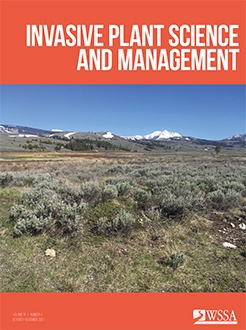Individual plant treatment (IPT) techniques (e.g., basal bark, cut stump, hack and squirt) are used for woody invasive plant management and often rely on small trigger-pump spray bottles as an economical and efficient way to deliver a herbicide to the target species. Worldwide, plastic suppliers produce many models and designs with a wide range of uses, including pesticide application. However, spray bottle performance has rarely been examined in relation to IPT techniques for operational invasive plant management. We tested 10 commonly available spray bottles for trigger output and variation over repeated strokes. We also examined sustained trigger sprayer performance over a 6-wk period for spray bottles containing water or basal oil carriers blended with amine and ester formulations of triclopyr, respectively. In the first study, we found significant differences in spray output per stroke between almost every bottle tested. Almost all spray bottle brands yielded outputs greater than 1.0 ml per stroke, which exceeds the maximum application amount specified for hack and squirt. Several bottles produced an output of greater than 2.5 ml per stroke. In the second study, the output per stroke was reduced for basal oil mixes, with significant reductions measured for two brands by 21 d and for all three brands tested by 42 d after mixing. These results indicate that consumer-grade trigger sprayers are likely to depreciate rapidly with routine operational use without proper hygiene maintenance. Even then it is likely that these application devices may need to be replaced several times annually. Trigger-pump spray bottles are an economical and practical solution for remote field operations and volunteer weed control activities. These sprayers are most suitable for spray-to-wet techniques such as basal bark and cut-surface treatments but may potentially be less suited for hack and squirt application, which often requires sub-milliliter precision.
How to translate text using browser tools
28 October 2021
Output variation of trigger-pump sprayers used for individual plant treatments
Stephen F. Enloe,
James K. Leary,
Kenzie Bell,
Dwight K. Lauer
ACCESS THE FULL ARTICLE
<
Previous Article
|
Invasive plant management
spray bottles
sprayer calibration
stroke output






